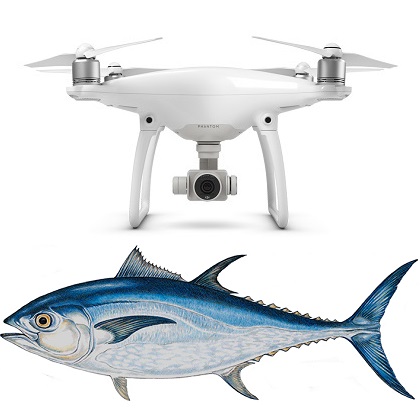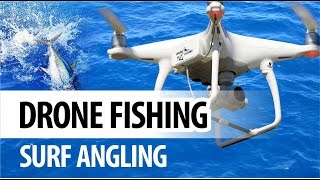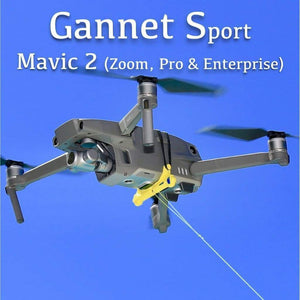
The regulations for drone fishing are important to understand if you plan on using one. Watch instructional videos about how to fly drones to catch fish. Our article on drone ethics will help you to make informed decisions about your drone use. We will discuss some ethical concerns regarding drone fishing. And don't forget to check out our drone fishing gear guide.
Regulations for drone fishing
While watching a video of drone fishing for tuna on YouTube, you may wonder what the regulations are. There are several reasons to follow local laws, but in the end, the main concern is safety. To protect both your life and that of the fish, you must follow the correct laws. In this article we will cover some of the most important rules and make sure you follow them. Also, don't forget about the International Game Fish Association Rules.
Drones cannot operate over public places such as sporting events and stadiums. They are not allowed to carry weapons or operate within half a mile from sporting events. Operators of drones must maintain a clear view of their aerial equipment at all time. Additionally, drones are not allowed to fly above people, stadiums, and critical infrastructure. You can check with your local law enforcement agency to learn more about drone fishing rules.

While most states have passed drone laws, there are still some states that have not. Illinois recently passed SB2167. The bill prohibits drones being used in state parks without permission. It also establishes privacy rights, and specifies the rules for recreational and commercial drone operators. It also prohibits drones interference with hunters and other wildlife. These new laws are expected be finalized within a few years.
Ethical concerns about drone fishing
Drone fishing is controversial and not without controversy. There are companies that sell underwater drones capable of fishing for fish. The video content of these drones often contains the actual fishing process, which is remarkably similar to casting a line to a fish. However, the method of pulling a fish out of the water is somewhat different. People who are concerned about ethical issues in fishing might want to consider other options.
Although drones are a great way to fish, some argue that they could be cheating the fishermen. Fishing has not changed much over the centuries, but using drones to catch fish might change that and decrease the thrill of the chase. Drones can also pose a threat to conservation. Before you buy a drone for fishing, here are some ethical considerations.

First, drone fishing is not the best option. Drone fishing can be harmful to the environment and could overfish endangered species. While some states permit drones for recreational fishing, others prohibit it. There are many limitations to drone fishing. Low-end drones may not be equipped with the necessary GPS functionality, lifting capability, or control range. In addition, drone fishing can lead loss of fish if lines get tangled. Piloting is also a problem.
FAQ
With a drone, can someone spy on me?
Yes, anyone can fly a drone and spy on you. The only way to protect yourself from drones is to be aware of them and avoid areas where they may fly. Call 911 immediately if you spot a drone flying about.
Can I fly my drone within my local park
Yes, you can fly drones in parks throughout the world. However, there are some countries that prohibit drone flying in parks. Check out our list of places where you can legally fly drones for fun.
Is it possible to fly a helicopter while driving?
Drone flying at high speed is dangerous. Additionally, you may hit pedestrians or animals. Additionally, hitting power lines, trees or buildings could cause damage to your car.
What kind of batteries is a drone using?
Most drones use lithium-ion batteries. A typical drone runs on between 3 and 6-volts.
Do drones fall under the control of the FAA?
The FAA oversees all aspects of drone operations, including safety standards, certification requirements, and licensing procedures.
How do you travel with a drone?
Drones are increasingly becoming popular both for personal and commercial use. They are used for video, filming aerial mapping, search &rescue, and many other purposes. Recently, the FAA approved new regulations for drones, including requirements for registration, licensing and pilot training. These changes will ensure that drones continue to be safe for all.
Statistics
- According to ZipRecruiter, the minimum hourly wage of drone pilots is $20. (thedroneu.com)
- Research and Markets predict a growth rate of 51.1% over the next five years. (thedroneu.com)
- According to the multiple listing service (MLS), houses and apartments with drone photographs are up to 68 percent more likely to sell than those without pictures. (thedroneu.com)
External Links
How To
How to Film Youself With A Drone
You can easily film yourself with a drone. All you need is a camera, remote controller, and your smartphone. First, get your FAA license. You will then need to purchase a quadcopter. This type of drone comes with four rotors, allowing it fly in multiple directions.
Once you have purchased your drone you will need it to be connected to your computer with a USB cable. Next, open the software of your drone.
-
Connect your drone's battery with the power source of the laptop.
-
Open the webcam of your drone and make sure that it's working properly. If you don’t see any images on the screen check that there are no problems with the connection between your drone to the computer.
-
Turn on the Wi-Fi function of your drone and enter the IP address of your computer into the field "IP Address."
-
Select "Open Camera" from the menu.
-
Make sure the image quality is set at HD 1080p
-
Click on "Record", then click "Start recording."
-
Once you're done recording, close the webcam software.
-
Save the video file to you hard drive.
-
Final step: Upload the video file onto YouTube via another computer.
-
Share your video link to social media sites like Facebook, Twitter, Instagram and Google+.